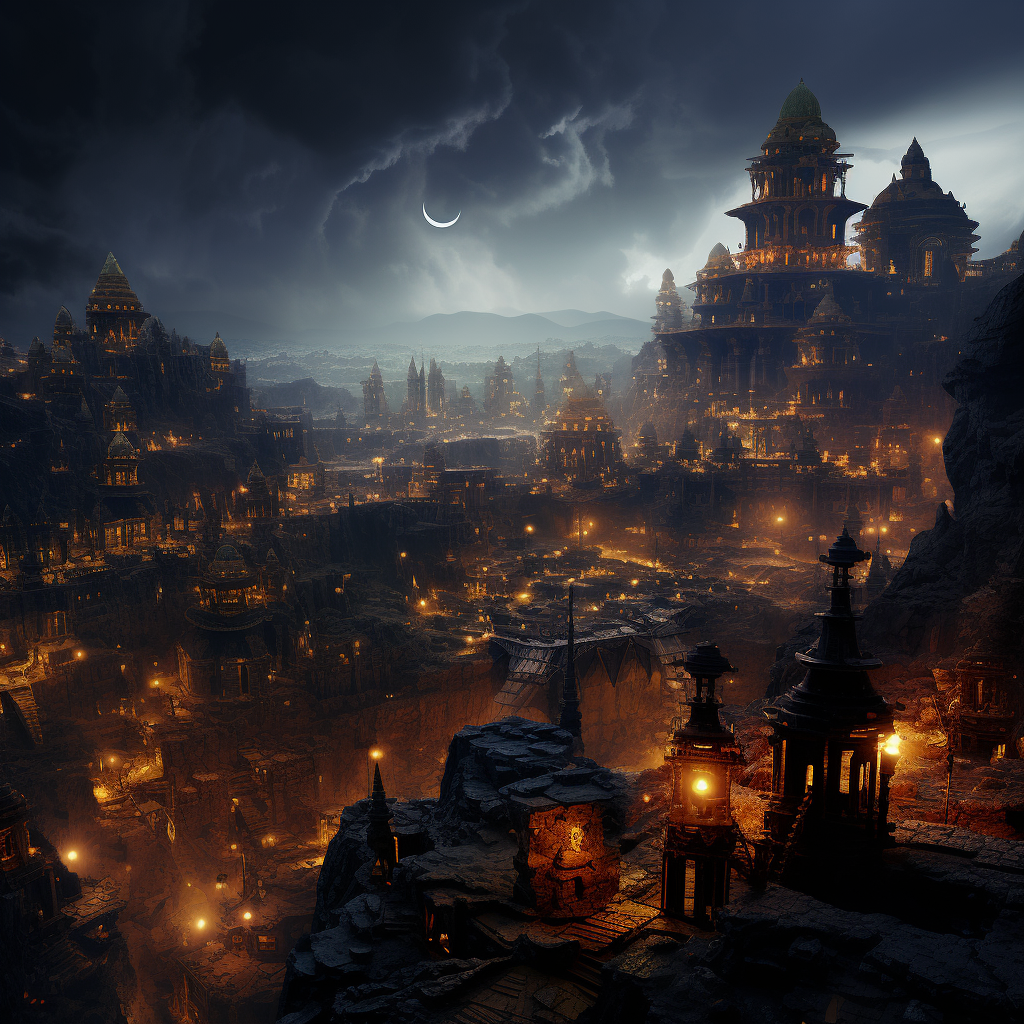Disterian elves
At the peak of the Second Age, Disteria was the most powerful and most populous nation on Scarterra.
Early in their history, Disteria invaded and annexed smaller neighboring nations, but the eventually realized there were downsides to managing too much territory under one banner so they opted to establish tributory states. In other words, nearby nations had to periodically provide Disteria, with gold, horses, or other valuables or face a destructive punitive raid.
Disteria had tributory relations with most nations in what is now known as West Colassia and East Colassia (back then it was just Colassia because the megacontinent hadn't split in half yet). Disteria was a primarily a land based power but they did have a navy which they occasionally sicced on weaker nations in the southern hemisphere. Their cultural imprint was stamped on
When the Second Unmaking commenced, the Demon Lord known as The Harbinger went straight for Disteria and systematically destroyed the nation. While Disteria had a powerful army and many powerful mages, at that time the strengths and weakness of Void demons were not commonly known and the Faceless remain even less understood so Disteria inflicted relatively little damage on the Harbinger's army.
Most other contemporary nations did not mourn Disteria's loss though they quickly realized that the Void Demons were targeting all mortals, not just the Disterians.
Modern dark elves are found of boasting that most/all of their ancestors were Disterian elves. In fact, they named their new nation Kahdisteria or "New Disteria" in the Elven tongue.
Modern wood elves and grey elves frequently claim the opposite and often state that none of their ancestors were Disterian elves.
Given that the modern elf ethnicities were forged by elven refugees from a great many nations, it is highly unlikely that the wood elves and grey elves don't have a single drop of Disterian blood in their blood, especially the wood elves whose current homeland is not especially far from the old heartland of Old Disteria. It is highly likely that the"Kahdisterians" exaggerate how many of their ancestors were Disterians given how far their current homeland is from the heartland of Old Disteria.
Culture
Shared customary codes and values
Disterians were not well liked because they loudly proclaimed a value system that put Disterians as the greatest of all civilized mortals. They viewed other elf ethnicities as little more than potential servants or worthless barbarians to be ignored.
Non-elves were treated worse. The Disterians enslaved goblins en masse. On paper, they did not enslave tengku and satyrs but historical records indicate that tengku and satyrs were legally and socially treated as second class citizens and most satyrs and tengku with the means to travel outside the Disterians purview chose to do so.
In the Second Age, it was hardly uncommon for elves to treat non-elves badly in some form or another and most elf kings and queens were eager to exploit the weaknesses of neighboring elf nations. The sins of the Disterians were more a matter of degrees...also they were heathens, showing very little piety to the Nine and only supporting underfunded and toothless Nonagons.
On the positive note, the Disterians believed in pushing every individual to achieve personal excellence. They believed sloth was the worst vice anyone could have.
Common Dress code
Specifics are unknown but enough records and illustrations survived into Third Age to give an idea on how the upper class dressed at least.
Purple was a favored color, presumably as a means of displaying wealth and status and purple is the most expensive dye to create.
High colars and pointed shoulder pads seemed relatively common among the upper classes.
Modesty seemed important as Disterian fashion did not commonly show a lot of skin. This carried over into Disterian lower classes as well.
Art & Architecture
Disterians had a great sense of their own grandeur and most surviving examples (either written records or actual ruins) of their architecture suggested a fondness for tall towers.
Art was also deliberately grand and often showcased expensive materials more than displaying true creativity.
Foods & Cuisine
The Disterians seemed to have a bit of a draconphile influence in their tastes. The upper classes were said to be fond of bonecracker eggs and they usually shunned any spice or foodstuff crop that debuted in the Second Age as "peasant food", preferring to eat things that debuted in the First Age.
Diverged ethnicities
Encompassed species
Languages spoken
Related Locations


Comments